Extension of Modal Analysis for Multi-Modal Response Spectrum Analysis
Response Spectrum Analysis | Features
- Response spectra of the following standards are implemented:
-
EN 1998-1:2010 + A1:2013 (European Union)
-
DIN 4149:2005-04 (Germany)
-
SIA 261:2020-08 (Switzerland)
-
SIA 261:2014-07 (Switzerland)
-
ASCE 7 | 2022 - IBC | 2024 (USA)
-
ASCE 7 | 2016 - IBC | 2018/21 (USA)
-
ASCE 7 | 2010 - IBC | 2012/15 (USA)
-
ASCE 7 | 2005 - IBC | 2009 (USA)
-
IBC 2000 (USA)
-
CFE Sismo:2015-07 (Mexico)
-
CIRSOC 103:2013-07 (Argentina)
-
GB 50011-2010-12 (China)
-
IS 1893:2016-12 (India)
-
NBC 2020 (Canada)
-
NBC 2015 (Canada)
-
NCSE 02:2009 (Spain)
-
NPR 9998:2020-12 (Netherlands)
-
NTC 2018-01 (Italy)
-
P 100-1:2013-08 (Romania)
-
SANS 10160-4:2017 (South Africa)
-
SBC 103:2018 (Saudi Arabia)
-
TBEC:2018 (Türkiye)
-
- The following National Annexes according to EN 1998‑1 are available:
-
DIN EN 1998-1/NA:2023-11 (Germany)
-
ÖNORM EN 1998-1/NA:2017-07 (Austria)
-
SN 1998-1/NA:2019-12 (Switzerland)
-
1998-1/NA:2013-05 (European Union)
-
BAS EN 1998-1/NA:2018 (Bosnia and Herzegovina)
-
BDS 1998-1/NA:2012-03 (Bulgaria)
-
BS EN 1998-1/NA:2008-08 (United Kingdom)
-
CSN EN 1998-1/NA:2016-09 (Czech Republic)
-
CYS EN 1998-1/NA:2009-03 (Cyprus)
-
ELOT EN 1998-1/NA:2015-04 (Greece)
-
HRN EN 1998-1/NA:2011-06 (Croatia)
-
LST EN 1998-1/NA:2010-12 (Lithuania)
-
ILNAS EN 1998-1/NA:2011-09 (Luxembourg)
-
LVS EN 1998-1/NA:2015-01 (Latvia)
-
MS EN 1998-1/NA:2017-01 (Malaysia)
-
MSZ EN 1998-1/NA:2013-07 (Hungary)
-
NBN EN 1998-1/NA:2011-10 (Belgium)
-
NF EN 1998-1/NA:2013-12 (France)
-
NP EN 1998-1/NA:2010-03 (Portugal)
-
NS EN 1998-1/NA:2021-06 (Norway)
-
SIST EN 1998-1/NA:2009-01 (Slovenia)
-
SR EN 1998-1/NA:2008-11 (Romania)
-
SRPS EN 1998-1/NA:2018-12 (Serbia)
-
SS EN 1998-1/NA:2013-02 (Singapore)
-
STN EN 1998-1/NA:2009-04 (Slovakia)
-
UNE EN 1998-1/NA:2020-01 (Spain)
-
UNI EN 1998-1/NA:2013-03 (Italy)
-
- User-defined response spectra or those generated from accelerograms
- Direction-relative response spectrum approach
- Manual or automatic selection of the relevant mode shapes of response spectra (5% rule of EC 8 applicable)
- Result combinations by modal superimposition (SRSS or CQC rule) and by direction superimposition (SRSS or 100% / 30% rule)
- Accidental torsional actions can be taken into account automatically
- Signed results based on the dominant mode shape can be displayed
Response Spectrum Analysis | Input
The Dlubal structural analysis software does a lot of work for you. The input parameters, which are relevant for the selected standards, are suggested by the program in accordance with the rules. Furthermore, you can enter response spectra manually.
Load cases of the type Response Spectrum Analysis define the direction in which response spectra act and which eigenvalues of the structure are relevant for the analysis. In the spectral analysis settings, you can define details for the combination rules, damping (if applicable), and zero-period acceleration (ZPA).
Response Spectrum Analysis | Calculation
Did you know that Equivalent static loads are generated separately for each relevant eigenvalue and excitation direction. These loads are saved in a load case of the Response Spectrum Analysis type and RFEM/RSTAB performs a linear static analysis.
Response Spectrum Analysis | Results
The load cases of the type Response Spectrum Analysis contain the generated equivalent loads. First, the modal contributions have to be superimposed with the SRSS or CQC rule. In this case, you can use the signed results based on the dominant mode shape.
Afterwards, the directional components of earthquake actions are combined with the SRSS or the 100% / 30% rule.
Webshop
Customize your individual program package and find out all the prices online!
Calculate Your Price

The price is valid for United States.

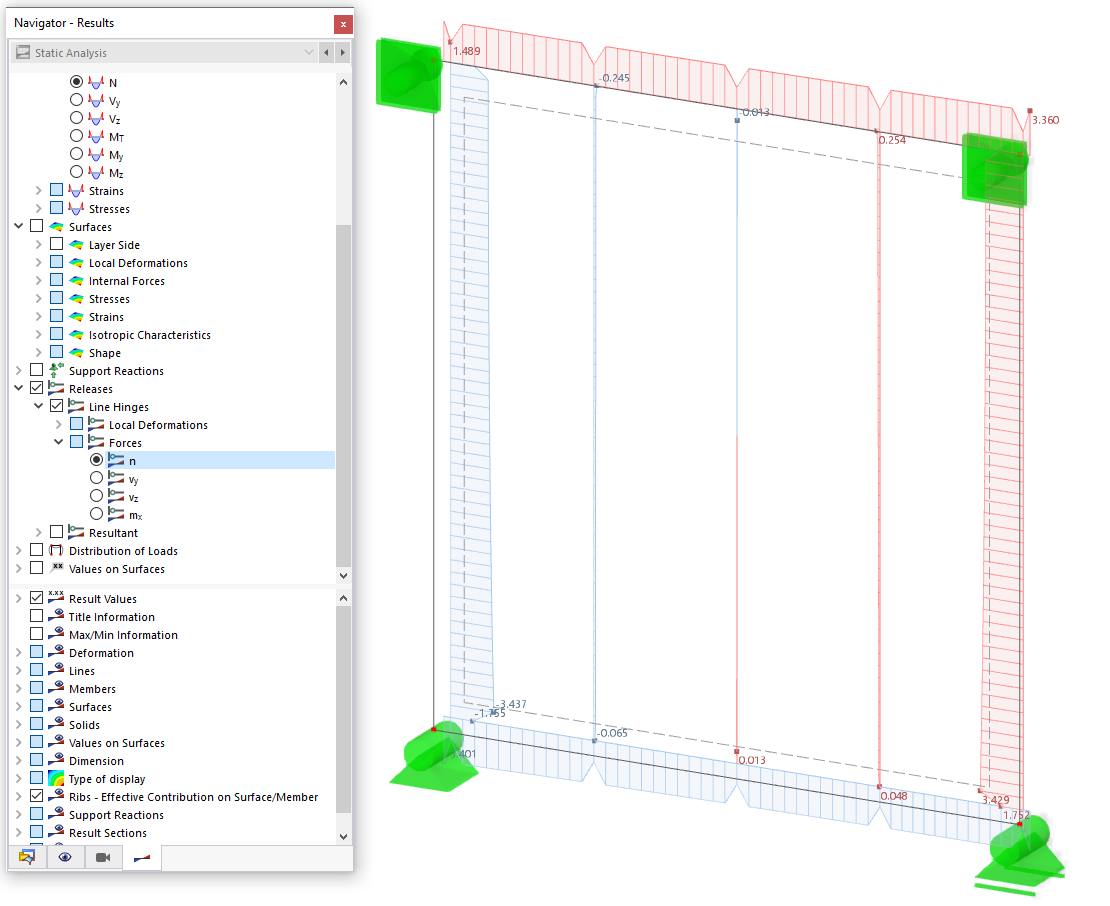
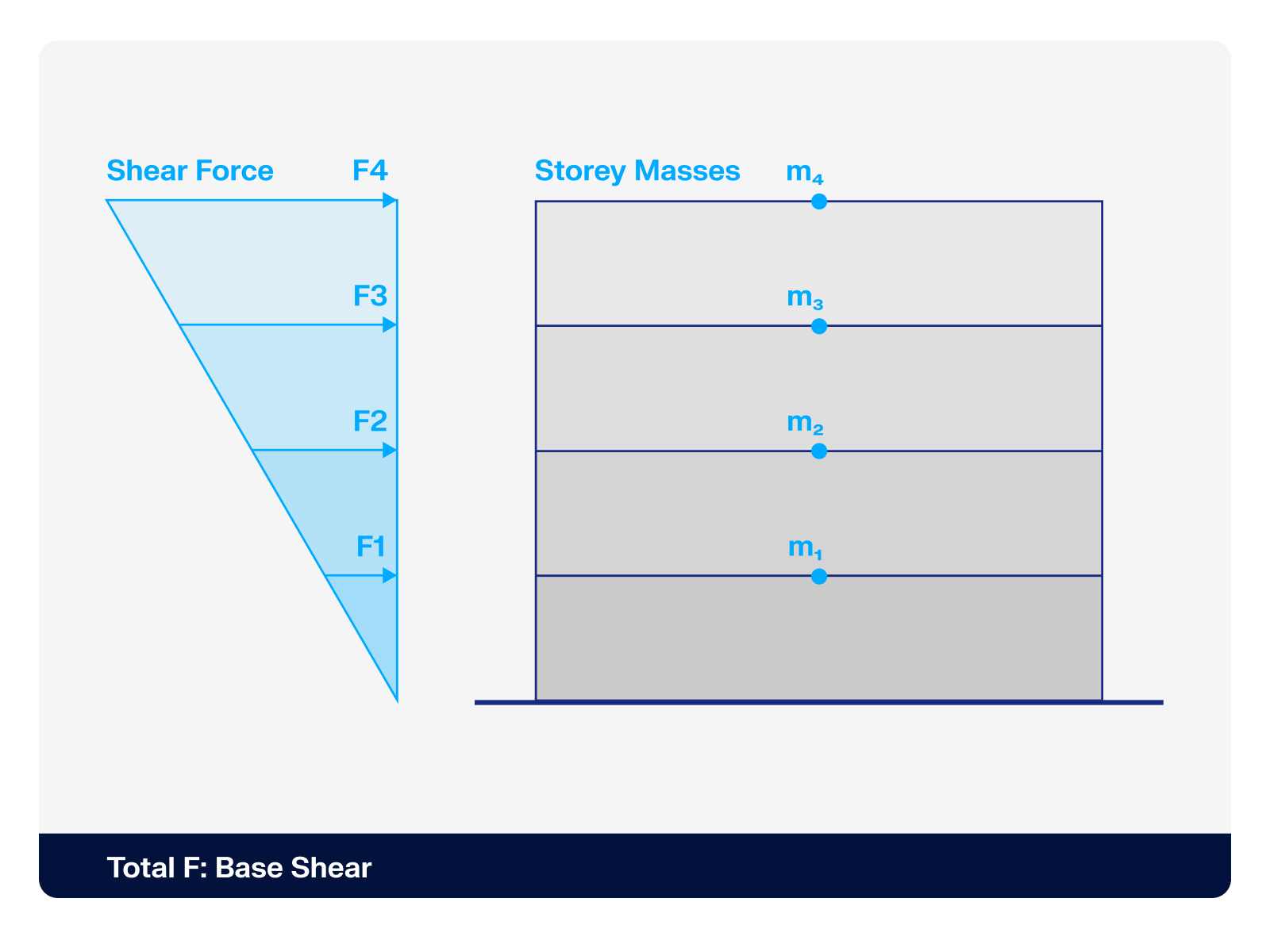.png?mw=512&hash=4a84cbc5b1eacf1afb4217e8e43c5cb50ed8d827)

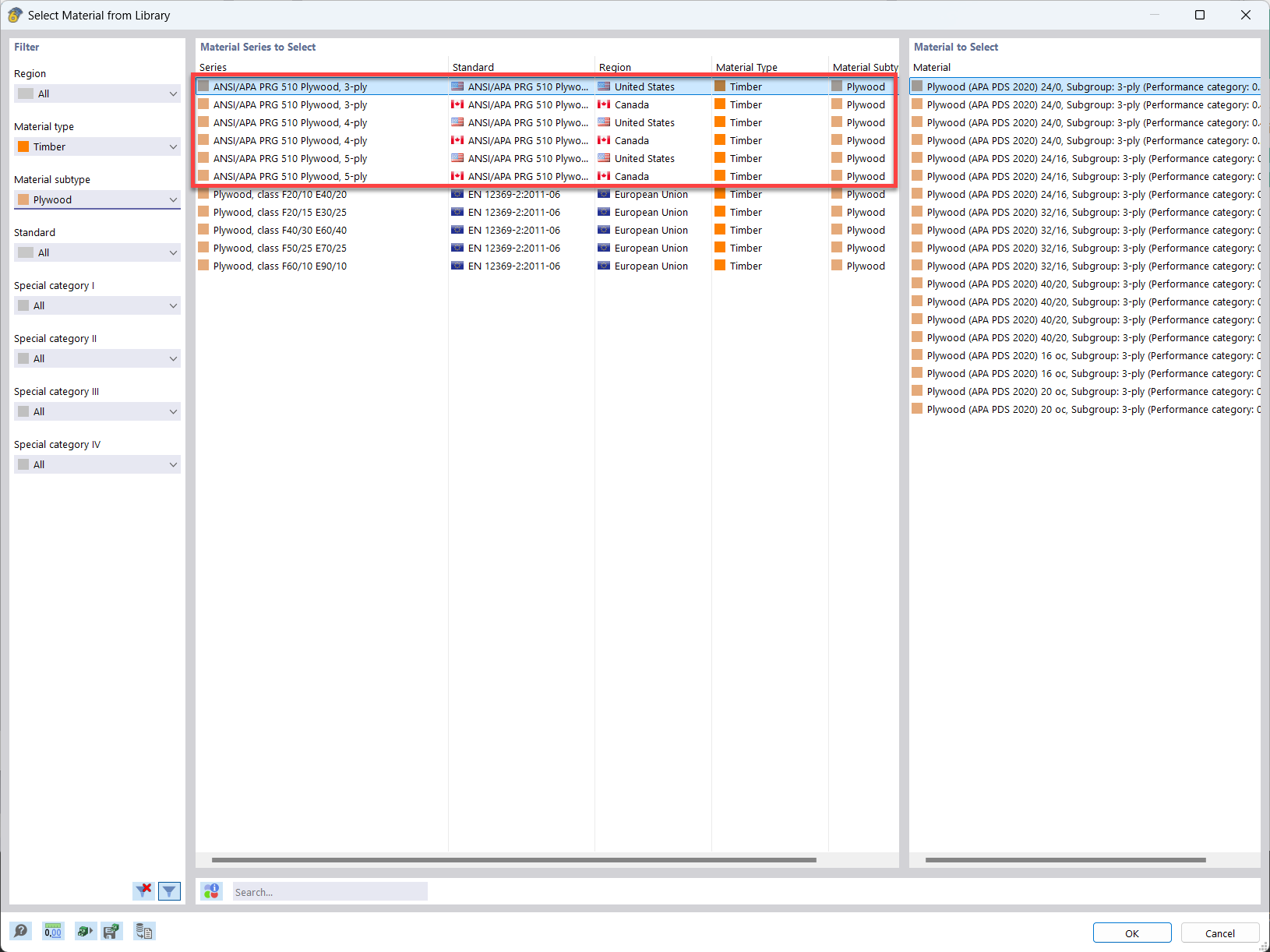
In the material library of RFEM, you can find plywood materials according to the US and Canadian standards ANSI/APA PRG 510 Plywood (USA/CAN).
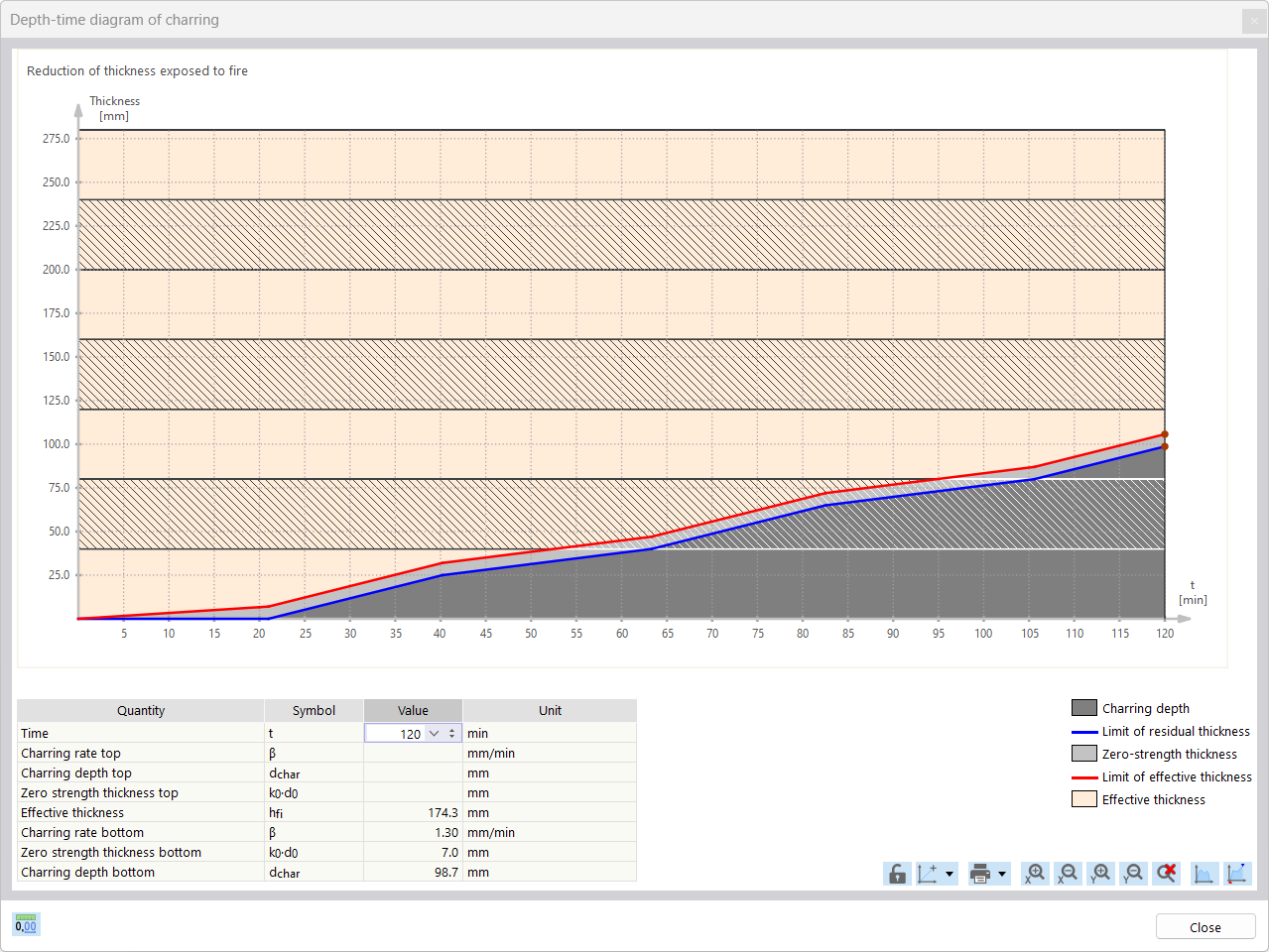
For the fire resistance design of timber surfaces, you can display a charring diagram depending on the time of fire exposure.
It is also possible to print this charring diagram into the printout report.
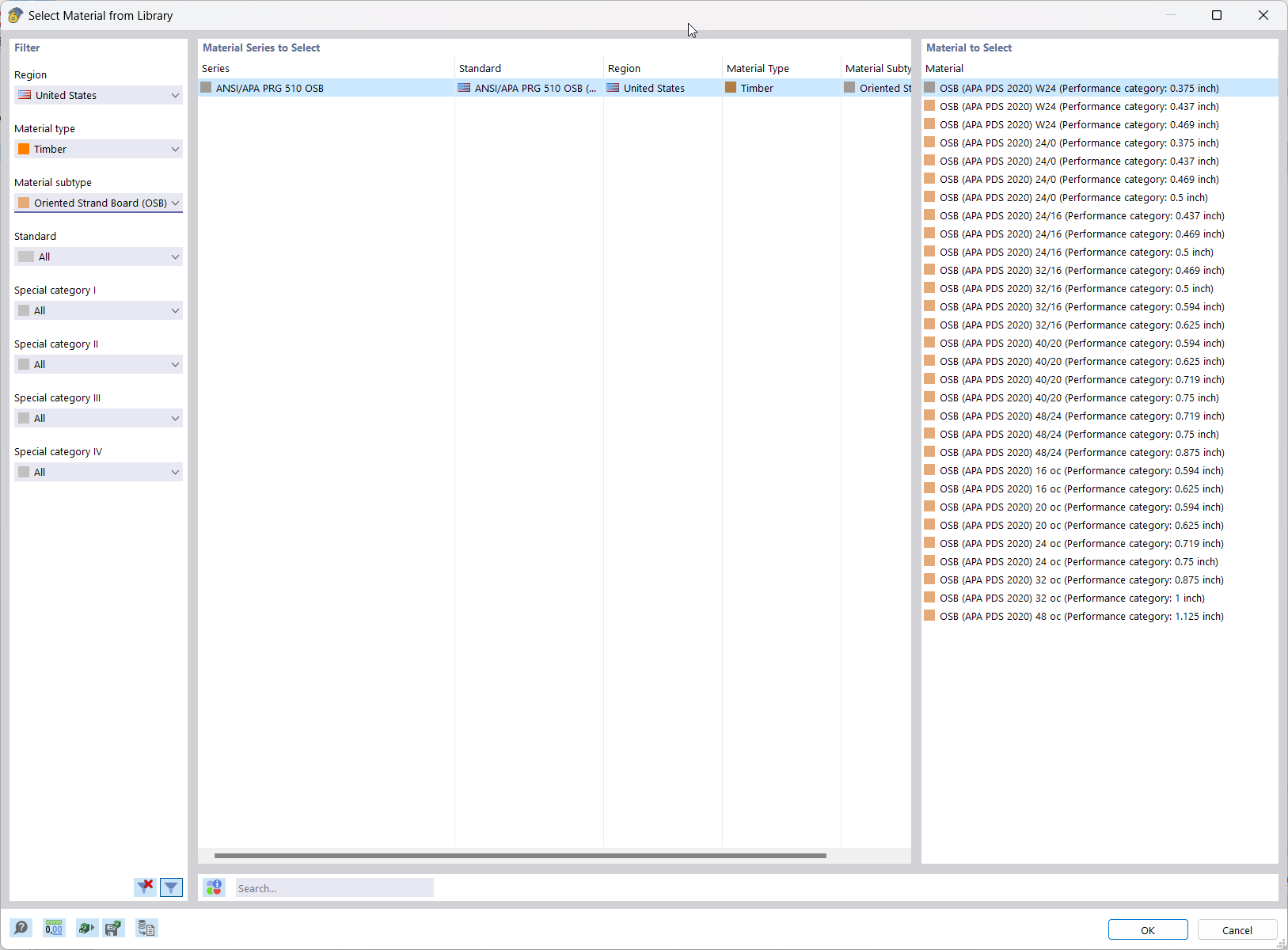
In RFEM, the oriented strand board (OSB) material is available for the USA and Canada. The material parameters are taken from the "Panel Design Specification manual".

Using the "Beam Panel" thickness type, you can model timber panel elements in 3D space. Simply specify the surface geometry and the timber panel elements are automatically generated using an internal member-surface construct, including the element connection stiffness. The Beam Panel thickness type is defined using the Multilayer Surfaces add-on.
A "beam panel" provides you with the following advantages:
- Single-sided or double-sided sheathing
- Automatic calculation of a semi-rigid coupling between studs and sheathing
- Nailed sheathing connection
- Stapled sheathing connection
- User-defined sheathing connection
- Representation as a complete geometric 3D object (frame, studs, surface, etc.), including eccentricity and automatically calculated stiffness between elements
- Consider openings via surface cells
- Design of the individual structural elements utilizing the Timber Design add-on (full shear wall design planned for a future release)
- Other material options available (e.g., particle board, gypsum, or fiberboard sheathing with cold-formed steel sections)
Do I need to add a line hinge/line release for the CLT wall-to-floor connection in the Building Model add-on?









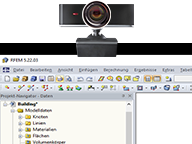
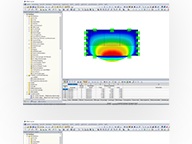
.png?mw=192&hash=f63e4a3f1836233005de32f60201d5392e507cf1)















































